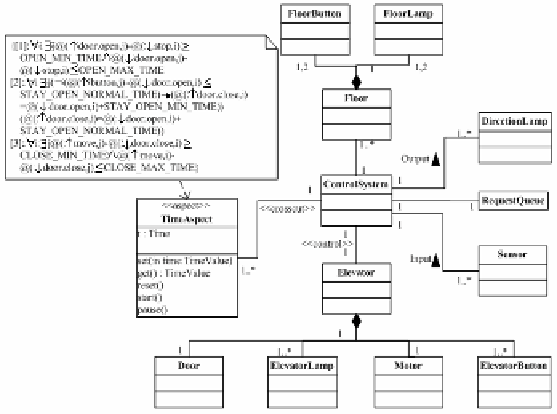Information Technology Reference
In-Depth Information
that was hard to develop and maintain. So we describe the real-time feature as an
independent aspect according to the AOP techniques, and design a time model to
realize and manage the time aspect in order to make the system easier to design and
develop and guarantee the time constraints.
We separate the real-time feature as a TimeAspect, which is an instance of <<as-
pect>> in the elevator control system. The TimeAspect crosscuts the core functional
class by stereotype <<crosscut>> in class diagram. Also timing constraints can be
attached to the TimeAspect explicitly. The elevator control system class diagram is
shown in Fig.4.
Fig. 4.
The Elevator Control System Class Diagram
Behavioral Description
UML has five behavioral diagrams to describe the dynamic aspects of a system as
representing its changing parts. Use case diagram organizes the behaviors of the
system. Sequence diagram focuses on the time ordering of messages. Collaboration
diagram emphasizes on the structural organization of objects that send and receive
messages. Statechart diagram focuses on the changing state of a system driven by
events. Activity diagram focuses on the flow of control from activity to activity mes-
sages. Use case diagram, collaboration diagram, and sequence diagram belong to
Inter-Object behavior diagrams. While statechart diagram belong to Intra-Object
behavior diagrams.
The time behavior is depicted by extending timing marks in the statechart
traditionally. But we treat the time as an object (time aspect) and describe it in col-
laboration diagram, so as to emphasize the time behavior of the system, and refine the
objects in statechart.

Search WWH ::

Custom Search